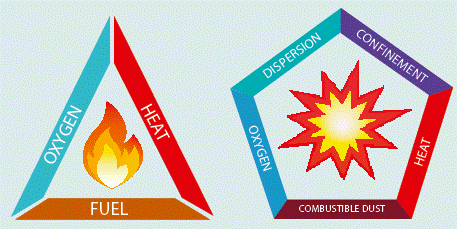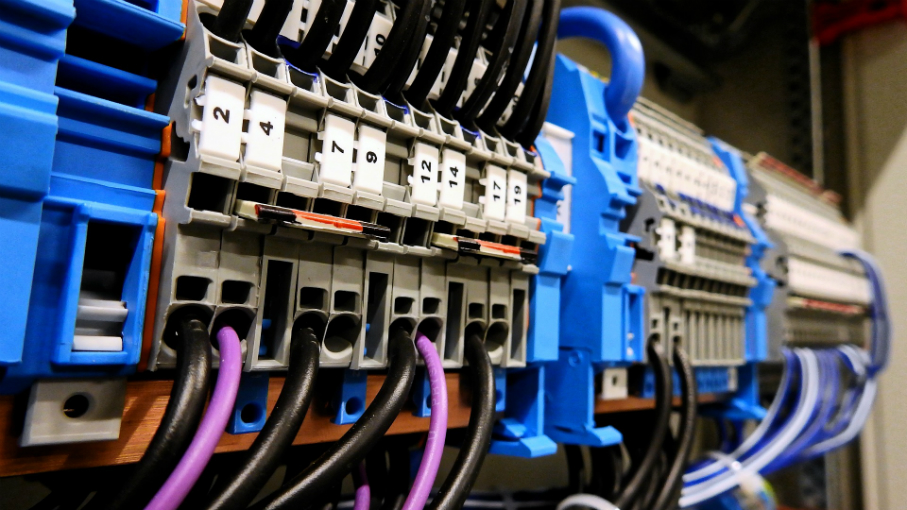Any lesson about safety and explosion risks always starts with the fire triangle or the explosion pentagon.

We know that a few variables are needed in order to start a fire or an explosion. Naturally, the safety industry is focused on removing one of these elements in order to mitigate the risk of explosion or fire.
If you take a look at the images above, you will see that fuel or heat are the most likely candidates across industries. And how do you go about removing fuel or heat from the equation?
Well, most people think it’s all about removing power. In fact, it’s a common industry-wide misconception that safety systems are designed to go to safety by removing power (de-energize to trip or to fail-safe). Another erroneous conclusion is that power supply failures lead to safety.
This isn’t only untrue: it’s also potentially very dangerous and damaging.
First of all, this assumes that all safety functions are de-energized to trip or to safety (DTS). But this assumption completely leaves out ETS (Energized to Activate) safety functions. Take the F&G systems instance: they are the perfect example of ETS safety.
Secondly, it’s worth to note that a power supply failure can be defined in more ways than one. It can be a low failure, a high failure or it can be somewhere in between. A high failure or ‘over-voltage’ in a power supply will lead all the connected units to go high causing harm to field instruments and subsequent systems making the safety function unavailable. A failure leading to an intermediate unknown status could also prove quite dangerous potentially creating a DU Failure.
SIL3 – Redefining Safety and Availability
SIL stands for Safety Integrity Level. It measures safety system performance or, in other words, the failure on demand probability of a SIS or SIF. SIL does not apply to individual components, only to complete systems.
The number near the acronym is its level. There are currently four levels. The higher the level, the better the performance of the system and the lower the potential dangerous failure on demand probability.
Also, it is important to remember that a higher SIL level also means a more complex and more costly system.
However, perhaps the most important feature of SIL3 is Safety-availability. Availability is a must in Safety Systems Power Supply (in fact, for all PS). It’s a cornerstone feature for ETS functions of course, but also for DTS functions.
When you use a SIL3 system means that the safety availability will be 10x higher than a SIL2 or a 100x higher than a SIL1 allowing the safety system to protect your employees and your assets. Therefore the availability and over voltage protection of the power supply will be crucial to select and configure correctly in able to provide you the necessary reliability for all SIF/SIS.
The good news for the end user, is that he can enjoy a completely safe system (you should NEVER make compromises when it comes to safety), one that is 100% compliant with SIL regulations and also enjoy unparalleled availability.
GM International made its mission to provide its clients with state-of-the-art safety devices that don’t just keep their facilities safe, but also ensure that operations run smoothly. In an era of cutthroat competition in any industry, being able to leverage all advantages is more important than ever.
GM International always provides expert advice about the best SIL3 solution; it takes great pride in its turnkey solutions that help its clients with their safety needs and also give them the vantage point they need.


